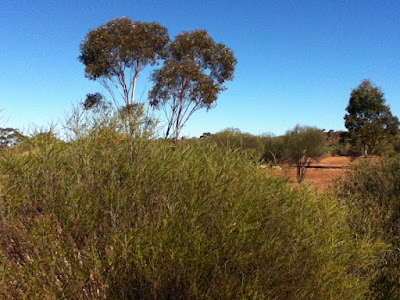Are you dreaming of owning a home?
Collateral, down payments, and variable or fixed term
interest rates.
Cities are expensive places to live.
New this century is the 30 year home mortgage?
Don’t wait until you’re old to apply for your first home loan
or you might not clear the debt before the pearly gates swing open to let you
in.
Small houses are not a new idea.
From the local history books, the gold rushes of the late 18th
and early 19th century transformed a struggling British colony into the State of
Western Australia. Men came from all over the world to search for gold and find
their fortunes.
 |
| Pioneers panning for gold. |
The pioneers started by camping out under the stars, made
bush shelters out of trees and mud, next came the hessian tents, and then the
one-roomed houses made of corrugated tin. Eventually timber weather-board homes
were built. More expensive, red brick, multi-room homes were constructed for
the wealthier people. It’s interesting that at the turn of the 19th
century, bathrooms, toilets and laundries were not part of the main house. They
were outbuildings in the backyard. Not good for the middle of the night visits,
winter or rainy weather.
 |
| Gum trees and acacia scrub in my local area. |
The most interesting pioneer house I’ve seen was made of food
and tobacco cans. The old-timers had to carry their own food and water
provisions as well as their prospecting equipment-picks, shovels and pans.
Fresh water was rare, and there were few white people or towns in the semi-arid
inland areas of Western Australia.
Salted beef (bully beef) was a popular tin food back then.
Men also smoked tobacco in their pipes. The owner of the house, had flattened food and tobacco cans into small metal strips he nailed together to
use as exterior cladding on his home. He was possibly a poor man or down on his
luck. The pioneer times were tough and people died from thirst, starvation and
disease. This home-maker recycled what he had. He was innovative, he labored,
had patience, and he bettered his circumstances. His house made of tin cans is
oddly beautiful.
 |
| Me driving down an eroded bush track. |
A couple of years ago, I had to make a call on a guy
who lived a hermit-like existence in the bush. His bed and cooking facilities
were located in a small caravan. He needed more space for gym equipment (to
improve his failing health) and to set-up a computer with an internet
connection.
So he dug himself a hole in the ground. Then he covered it
with sheets of tins and pinned down the metal roof with loose tree branches. He
set up a trailer with solar panels and batteries for his electrics.
He cut neat steps down through the red clay rock to his
underground room. A plastic shower curtain hung as a door. The dug-out blended
in with the surrounding woodland. I walked all over his camp site trying to
find him. He eventually heard me calling his name and came to the surface. He
boiled some water in a saucepan on his caravan stove to make a cup of tea. I
sat down outside on a milk crate to talk to him. I was tempted to stir my tea in an enamel cup with a gum leaf for authentic bush flavor.
 |
| Cockatoo sitting on the electrical wires at the front of my house. |
Old ways won’t open new doors.
All over the world there is a small housing revolution
underway.
It starts with a life-style choice and means downsizing space.
Gypsy caravans and grey nomads, people are thinking different
ideas about owning their own homes.
Paying off smaller home mortgages and being able to afford to
live.
Sustainable homes.
Salvaged homes.
Recycling.
Self-contained and off-grid.
A dream home worth pursuing for some people.
This week on Google + I’ll be featuring articles about Small
Houses. Homes on wheels, a barn conversion, a home that turns in a circle to
catch the sun, holiday cabins, and cardboard homes.
Home is where the heart is.
♥ Ashlyn


No comments:
Post a Comment